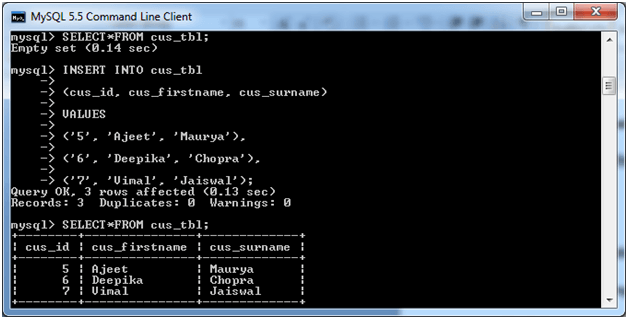
Taking this SQL certification course will equip you with all that you need to work with SQL databases and use them in your applications.

If you wish to learn more about SQL, then check out our SQL certification course. Equality operator improves the performance of the SQL query. Through this article, you have now gained a solid understanding of SQL Not equal Operator, along with pertinent examples. Gain expertise in the latest Business analytics tools and techniques with the Post Graduate Program in Business Analysis. The city whose sum of points is equal to 3220 is excluded from the results. SQL Not operator can also be used with the combination of GROUP BY and HAVING clause in the following way: The statement given above will produce the following results.Įxample 4: SQL Not operator and SQL Group By clause We can specify multiple conditions for Not operator using the WHERE clause. The above example will exclude the details of the customer whose first name is Elka.Įxample 3: Specifying multiple conditions using SQL Not Operator
#Mysql not equal code
The above-given code will exclude the details of customer_id 1.Įxample 2: Get a list of all customers except one specific customer It can return either True (if one expression is not equal to another) or False (if the expressions are equal).ģ != 3 -> False Example 1: Get all customer details except customer_id 1 You can use the comparison operators, such as >, 10 This MySQL OR condition example would return all supplier_id and supplier_name values where the supplier_name is either Microsoft, the state is Florida, or offices is greater than 10.SQL Not Equal is a boolean expression. A subquery is usually added within the WHERE Clause of another SQL SELECT statement. A SELECT clause - A FROM clause - A WHERE clause In MySQL subquery can be nested inside a SELECT, INSERT, UPDATE, DELETE, SET, or DO statement or inside another subquery. The IN operator returns 1 if the value of the column_1 or the result of the expr expression is equal to any value in the list, otherwise, it returns 0. Separate the values in the list by commas (,). Let’s examine the query in more detail: Use a column or an expression ( expr ) with the IN operator in the WHERE clause. Let me take on example to demonstrate the functionality of MySQL where clause in real-time. It means SELECT Statement will return the records only If the condition specified after the WHERE keyword is TRUE. The MySQL WHERE Clause restricts the number of records or rows returned by the SELECT Statement. You can use one or more tables separated by a comma to include various conditions using a WHERE clause, but the WHERE clause is an optional part of the SELECT command. The following code block has a generic SQL syntax of the SELECT command with the WHERE clause to fetch data from the MySQL table − SELECT field1, field2,fieldN table_name1, table_name2 ] condition2.

The filter could be a range, single value or sub query. SELECT * FROM tableName WHERE condition HERE "SELECT * FROM tableName" is the standard SELECT statement "WHERE" is the keyword that restricts our select query result set and "condition" is the filter to be applied on the results. The basic syntax for the WHERE clause when used in a SELECT statement is as follows. The following query uses a less-than ( WHERE `id` IN (SELECT unit_trust_managing_company_id FROM ut_funds) Also, the distinct and order by are not needed for the in statement. In MySQL, you can use the ), less than ( ) operator to form the join condition. The query to create a table is as follows −. SELECT *FROM yourTableName WHERE yourColumnName anyValue To understand the above syntax, let us first create a table. If you want to work with not equal operator, then use the operator. If you want to delete everything which is not 2(including the NULLs) then add OR id IS NULL to the WHERE clause. DELETE FROM table WHERE id 2 As Schmitt noted, you might want to be careful about the NULL values too. DELETE FROM table WHERE id NOT IN ( 2 ) OR.


 0 kommentar(er)
0 kommentar(er)
